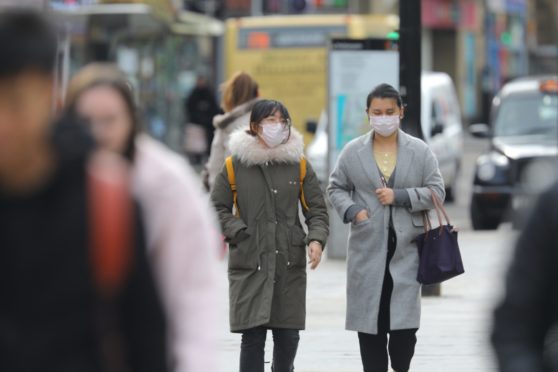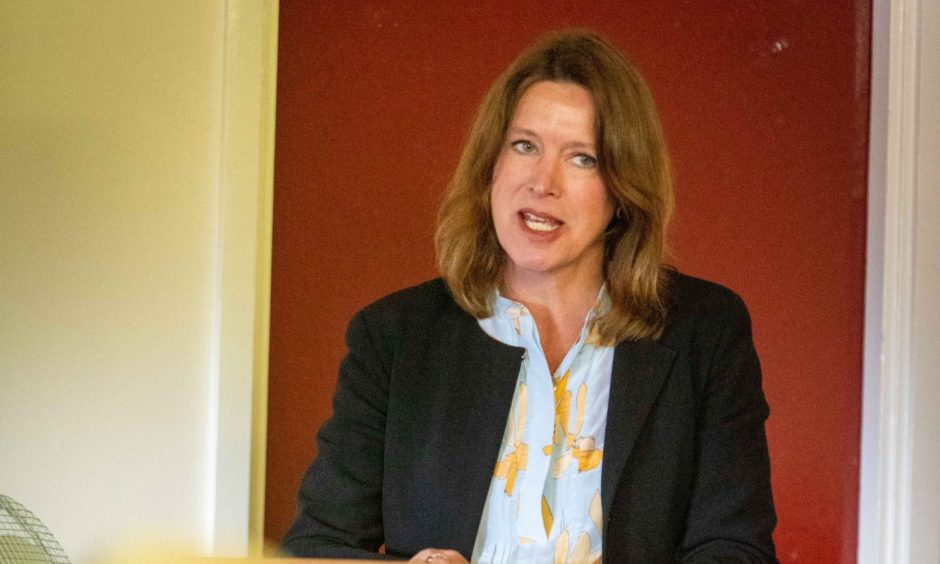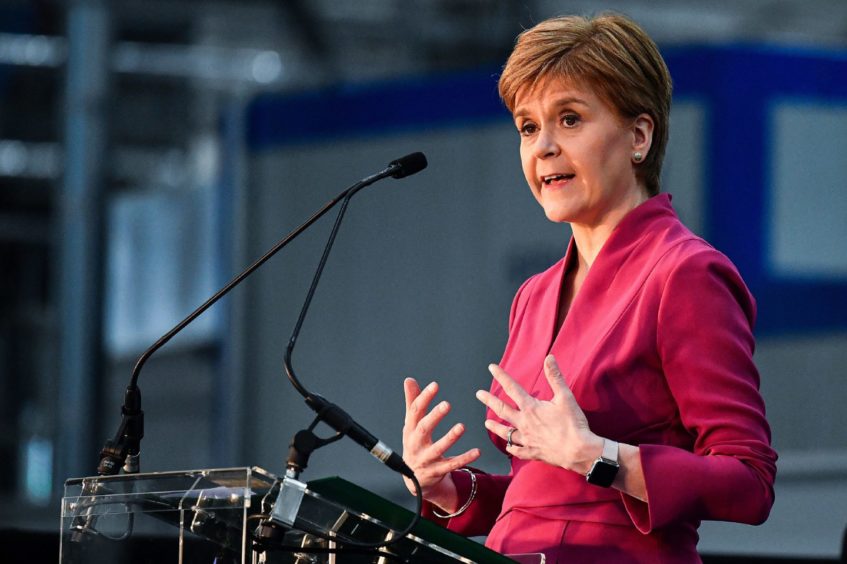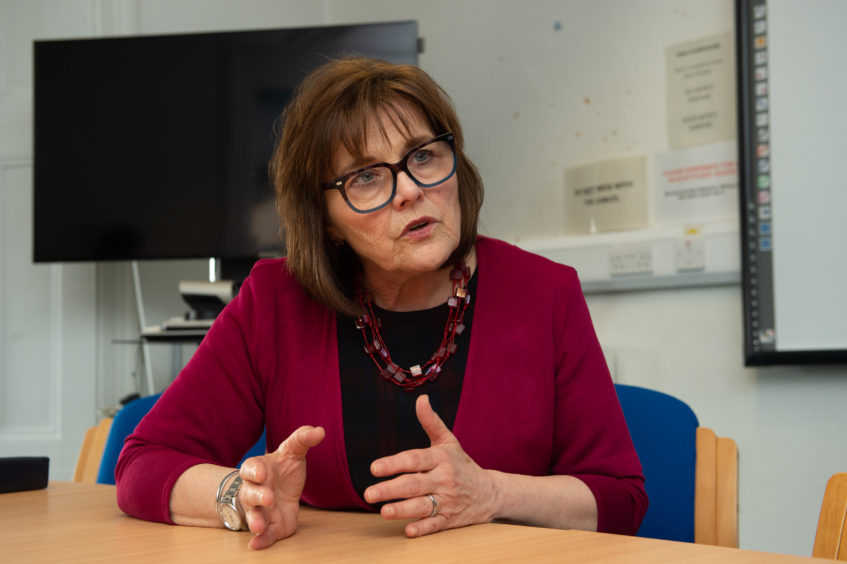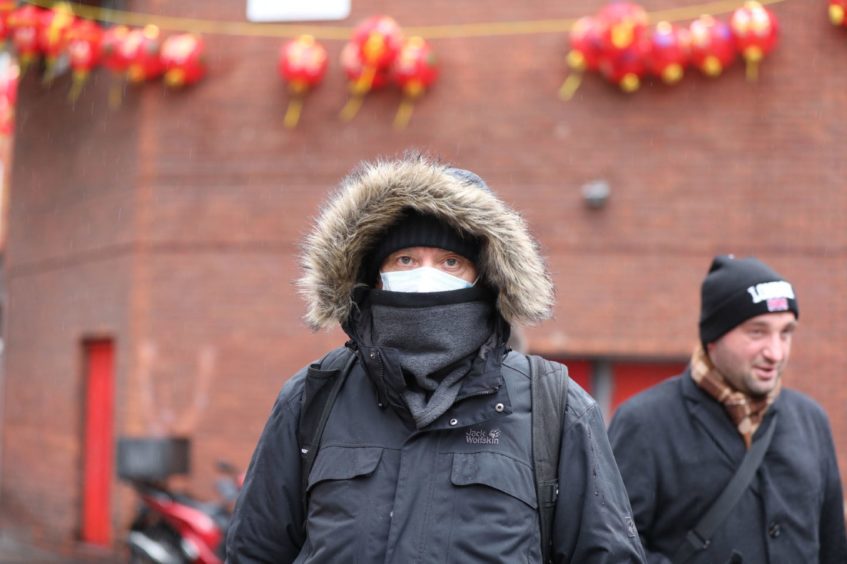Up to 250,000 Scots could be hospitalised by the coronavirus in a worst-case scenario, the country’s most senior doctor has warned.
Chief Medical Officer Dr Catherine Calderwood said between 50% and 80% of the population may become infected by the virus with a “peak” expected in two or three months time.
Dr Calderwood emphasised that the vast majority of cases would be mild. But she said up to 4% of Scots could need hospital treatment, the equivalent of between 200,000 and 250,000 people.
The forecast emerged at a press briefing hosted by First Minister Nicola Sturgeon held after it was revealed a Tayside patient had become Scotland’s first coronavirus case.
Earlier, Ms Sturgeon had taken part in the UK Government’s emergency Cobra meeting and signed up to the UK Government’s Four Nations Action Plan to co-ordinate coronavirus action.
Sturgeon says the situation is "serious and I am not going to suggest otherwise"…but wants to reassure the public that protocols are in place for dealing with matters of this nature.
— Tom Peterkin (@TomPeterkin) March 2, 2020
Speaking afterwards, Ms Sturgeon predicted there would be a “significant outbreak” in the weeks to come but sought to reassure people plans were in place to tackle the infection.
At a Scottish Government press conference in Edinburgh, Ms Sturgeon, Dr Calderwood and Health Secretary Jeane Freeman gave an update on the potential severity of the outbreak, NHS planning, the Tayside case, the future of major events and other questions arising from the virus’s first appearance north of the border.
How badly will Scottish people be affected by the virus?
Dr Calderwood said that based on the experience in China, where the virus originated, up to 4% of the Scottish population could become ill enough to need hospital treatment.
That percentage translates to between 200,000 and 250,000 people. The figure, however, comes with caveats. It is very much a worst-case scenario and is based on modelling coming out of China which has a different population and healthcare system to Scotland.
Chief Medical Officer clarifies up to 4% of population could require hospital admission. 80% of population might have mild symptoms. FM says these are "reasonable worst case scenarios". #coronavirus
— Calum Ross (@CalumRoss23) March 2, 2020
Dr Calderwood said there was “good evidence” that the virus was contained in Scotland at the moment and its peak would not be expected for another two to three months.
“We are expecting perhaps 50% or as much as 80% of the population would be affected,” Dr Calderwood said.
I do think it is important we give frank information around this, but it is not overly dramatised.”
Nicola Sturgeon
Most cases, however, would be mild with sufferers expecting to be back at work or back to normal activities within 10 days.
Ms Sturgeon added: “I do think it is important we give frank information around this, but it is not overly dramatised. This is over a period of time and the vast majority of cases will be very mild illness and there are significant caveats on the numbers that have been given.”
How is the NHS in Scotland preparing for more cases?
The ministers insisted that plans were well established to help ensure the NHS and social care sector can cope with such a disease outbreak.
The Scottish Government’s resilience committee has been meeting to update the work.
Ms Sturgeon said particular care was being taken on how to protect vulnerable people from infection.
“One of the priority issues that is very much in our mind as we go forward in the next days and weeks, is how we establish and provide maximum protection to vulnerable groups, both vulnerable groups from a health perspective, but also vulnerable groups from the perspective of deprivation, income and poverty,” the first minister said.
Health Secretary Jeane Freeman said each NHS board area had procedures in place, while Dr Calderwood said some already had “drive through” testing, whereby people can stay in their car during tests to limit their exposure to the wider public.
Ms Freeman said NHS Scotland had a “clear resilience plan” plus health boards had their own blueprint for dealing with the virus.
“Some time ago we asked them (the health boards) to stand those plans up and begin to work them through in terms of the current situation and the expectation of the current situation,” Ms Freeman said. “That’s what they are all doing – they are advising us.”
The health secretary said that NHS National Services Scotland was working to ensure the service had enough supplies to meet demand.
Boards were reviewing what impact the virus might have on routine operations and other procedures with meetings being held once a week, involving government and senior people in the NHS.
On the issue of vulnerable people being affected by the outbreak, the health secretary added: “That also extends to social care. We had some early discussions again this morning on how we would take those preparations out with the direct involvement of our colleagues in local government, so that our social care sector is as prepared as we need it to be.”
What is the latest on the Tayside patient, who was the first in Scotland to be infected?
Ms Sturgeon said the Tayside patient remained the only case in Scotland, although more were expected to be confirmed in the coming days and weeks.
She said: “The patient is not seriously ill at this stage, they are in hospital as a precautionary measure, and I would stress that at this stage it is as a precautionary measure.
“Contact tracing for that patient started last night, and is under way. Given that we are in the containment phase of this infection, that is very important.”
Tayside #coronavirus patient self-isolated. FM says case was "handled entirely in line" with procedures.
— Calum Ross (@CalumRoss23) March 2, 2020
The first minister said that in future, not every confirmed case would lead to hospital treatment. She told journalists that she could not discuss the patient’s details, but that all procedures had been followed.
“The patient had recent travel history in Italy and now of course all of the proper things are being done to make sure all of the contacts are being followed up, and if necessary, tested, and in all cases given appropriate advice,” Ms Sturgeon said.
“The patient has been admitted to hospital, but not because of the clinical condition of the patient at this stage, but for precautionary reasons.”
The first minister denied reports on social media that the patient was being treated at Ninewells Hospital in Dundee.
“I’m not going to go into details of the whereabouts, and I know there has been some questions about Ninewells… (but) Ninewells is not caring for this particular patient, they are in an appropriate hospital in Scotland,” she said.
Dr Calderwood told the media that the patient had followed official advice, which was to phone and make contact, and not to go to a healthcare facility.
“They then received advice to attend an isolated area and were offered testing as that was appropriate,” she said. “So they did self-isolate, having recognised themselves that they had some risks.”
Will major events like the Scotland/France rugby match be cancelled?
Ms Sturgeon said the Scotland versus France rugby international at Murrayfield is still on “at this stage”, although the situation is under constant review.
The same applies for other major events including November’s COP26 climate change talks that will result in world leaders descending on Glasgow.
At the moment action being taken against the coronavirus is in what’s known as the “containment phase”. It is only when that state is escalated to the “delayed phase” – when efforts are made to delay the onset of the virus – that decisions are made on whether to hold major events.
“It’s in the next phase of development that decisions routinely around the cancellation of events will be taken and decisions will be taken very strongly on the scientific advice that is available to us,” Ms Sturgeon said.
Should masks be provided on the NHS?
Dr Calderwood said the only benefit of masks for someone without coronavirus symptoms would be that they would stop them from touching their own mouths and noses.
“They haven’t really got any benefit in preventing spread if you are asymptomatic,” the chief medical officer said.
For someone with symptoms, masks would prevent droplets from coughs and sneezes infecting others.
Ms Sturgeon said it would be for the government to consider how masks were made available if it was decided they should be used.
“From the political, government perspective if we moved to a position – and I’m not saying we would – where we were advising people to use masks and other protective equipment that would be for the government to consider how to supplies were made available,” the first minister said.
How effectively are the Scottish and UK governments working together on this?
It is at times like these when the Scottish and UK governments must set aside their differences and work together for the good of the people. Neither Boris Johnson nor Nicola Sturgeon can afford to let their political rivalries interfere with planning for a virus, which has taken hold on our common landmass and which does not recognise borders.
Hence Ms Sturgeon’s willingness that the Scottish Government signed up to the UK Government’s Four Nations Action Plan, which will co-ordinate action across the UK’s constituent countries.
Ms Sturgeon, Health Secretary Jeane Freeman and Scotland’s Chief Medical Officer Catherine Calderwood took part in Mr Johnson’s coronavirus Cobra meeting and details of the plan will be published on Tuesday.
Alongside this relatively rare show of constructive engagement, the politicians will be acutely aware of the need to reassure voters that they are on top of the situation. Any other suggestion would prove damaging.
Nevertheless it is impossible to escape comparisons with the way the two governments are handling the crisis. Mr Johnson has already faced accusations that he has been acting as a “part-time prime minister” as the virus has taken hold. By chairing a Cobra meeting, Mr Johnson hopes to dispel that impression.
UPDATE: No 10 confirm today was the SIXTH emergency COBRA ctte meeting on #Coronavirus. And the first attended by @BorisJohnson.
However they point out the PM has received private briefings from Chief Medical Officer and Chief Scientific twice a week since the outbreak began.
— Joe Pike (@joepike) March 2, 2020
Ms Sturgeon has been quick off the mark, holding her St Andrews House press conference immediately after taking part in the prime minister’s Cobra meeting and within a few hours of Scotland’s first case.
Fascinating @NicolaSturgeon is already speaking live about Coronavirus / COVID-19 after dialling into COBRA meeting earlier.
Effectively beating the UK government in responding. Helps make herself seem in control and and a key player in the management of the outbreak.
— Joe Pike (@joepike) March 2, 2020
What can the public do to limit the spread of the virus?
The first minister urged the public to take steps to play its vital role in containing the virus.
“It’s very important the public is abiding by the public health and public hygiene advice that is available,” she said.
“I’m very aware that this can often sound basic, to the point of being redundant, but it is really important that advice on hand-washing, about what to do when you are coughing or sneezing, is followed by the public.
“At this stage of dealing with an outbreak, the public has a big part to play and a very important part to play in helping to contain, for as long as possible, the spread of this virus.
“So information for the public is available in very comprehensive form, that is available on the ‘NHS inform’ website, and I would ask the public to familiarise themselves with that, and to make sure that they are following that advice.
“I would stress again that in doing so they are playing an important part in helping us to deal with this situation.”
Dr Calderwood said that people who had travelled from category 1, which includes parts of China, South Korea and parts of Italy, or category 2 countries, mainly in south-east Asia, should follow NHS advice.
“If you have symptoms – which would be a cough, fever, shortness of breath – again, self-isolate, don’t come to a healthcare facility, phone and local health protection schemes will give bespoke advice according to that person’s travel history and their symptoms.
“If people are attending, or are advised to attend for testing, all of our health boards now have those services available in the community, so that people will be kept away from emergency departments, primary care facilities.”
